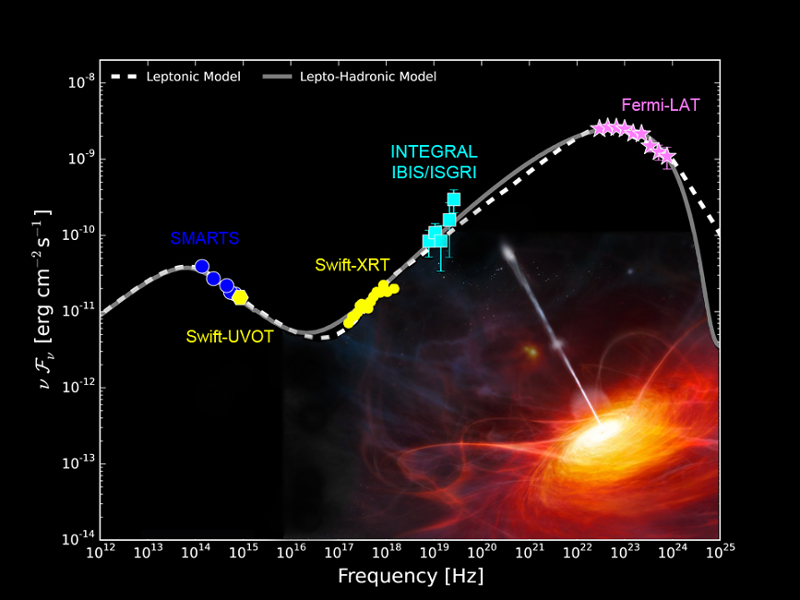
 Credit: Bottacini et al., 2015, The Astrophysical Journal, 832, 17; ESO/M. Kornmesser
Credit: Bottacini et al., 2015, The Astrophysical Journal, 832, 17; ESO/M. Kornmesser
The Broad View
Active galaxies are those which harbor an accreting supermassive black hole that's eating so much material from its host galaxy that the radiation from the black hole is brighter than the combined emission from all the galaxy's stars. Amazing to think that this energy is generated in an incredibly tiny volume: even though the supermassive black hole may contain many the equivalent mass of billions of suns (about 1% of the total mass of the galaxy), the black hole's size (measured by its event horizon) would fit comfortably (though uncomfortably for earthlings) within the orbit of Neptune. Feeding black holes often generate narrow, powerful particle beams which shoot into space for hundreds of thousand, or even millions of light years. In some active galaxies, called blazars, the black hole's jet is pointed directly at earth, producing very bright and variable high-energy X-ray and even Gamma-ray emission. These galaxies give us unique views of black hole accretion and jet production, but require observations covering almost the entire electromagnetic spectrum to fully characterize the emission. And because these sources are so variable, these observations need to happen nearly simultaneously, a difficult thing to arrange for busy astronomers and highly-oversubscribed telescopes. Recently, however, one such multi-wavelength observing campaign was accomplished, with an important blazar, 3C 279, as the target. The observations occurred around a bright flare from the blazar seen by the INTEGRAL Gamma-ray space laboratory, and a number of space-based and ground-based observatories were (relatively) quickly pointed at the active galaxy during this particularly active time. The image above shows (in lower right) an artist's illustration of what 3C 279 may look like, while the graph summarizes the brightness of the blazar from optical to Gamma-ray wavelengths (as measured by the SMARTS optical observatory, and by the space-based observatories Swift, INTEGRAL and the Fermi Gamma-ray Space Telescope). The grey solid line and the broken white line represent two theoretical models to describe the behavior of the black hole. Both models describe the observations, but both require unusually extreme properties to fit the data.
Published: August 7, 2017
<
HEA Dictionary ● Archive
● Search HEAPOW
● Other Languages
● HEAPOW on Facebook
● Download all Images
● Education ● HEAD
>

Each week the HEASARC
brings you new, exciting and beautiful images from X-ray and Gamma ray
astronomy. Check back each week and be sure to check out the HEAPOW archive!
Page Author: Dr. Michael F. Corcoran
Last modified Monday, 26-Feb-2024 17:09:33 EST


